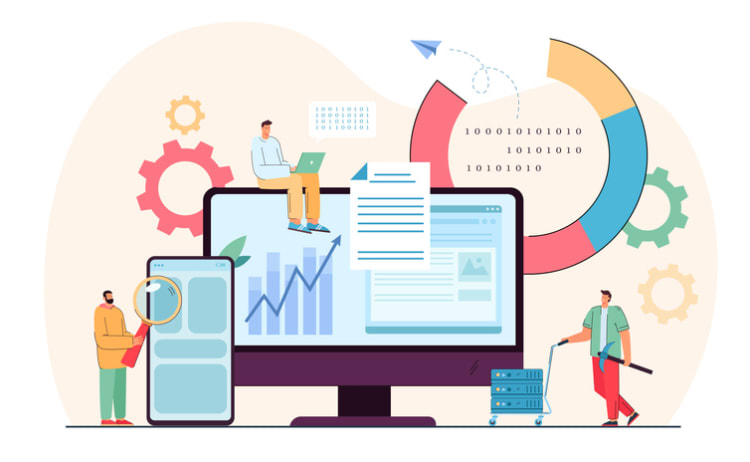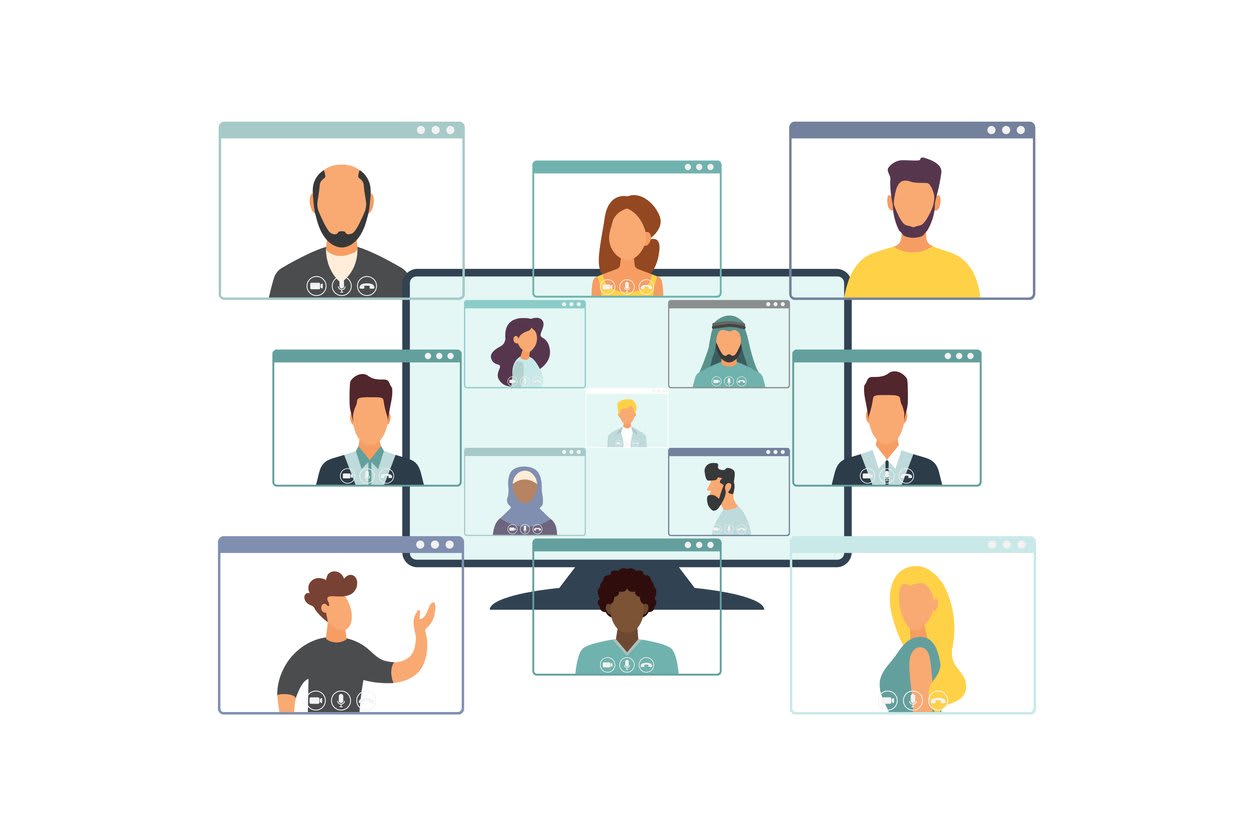Imagine a workplace where teams can communicate efficiently, manage their time effectively, and maintain a healthy work-life balance. This ideal scenario is becoming a reality with the rise of asynchronous communication in 2024. As the world continues to embrace remote work, understanding and leveraging the benefits of asynchronous communication is key to unlocking productivity and fostering teamwork across distributed teams.
In this blog post, we’ll explore the ins and outs of asynchronous communication, its importance, and how it contrasts with synchronous communication. We’ll also delve into the essential tools and strategies to overcome common challenges and enhance team collaboration. So let’s dive in and discover how asynchronous communication can revolutionize the way we work and collaborate.
Short Summary
- Understand the benefits of asynchronous communication for remote work and productivity.
- Utilize essential tools such as email, messaging apps, project management platforms, and cloud storage to collaborate effectively.
- Establish clear guidelines to manage time efficiently while promoting trust and accountability among team members.
Understanding asynchronous communication

Asynchronous communication is a game-changer in today’s remote work environment, offering flexibility, autonomy, and increased productivity to team members across time zones. It allows individuals to work at their own pace, enabling deep work and focused tasks while still maintaining effective communication with their colleagues.
But what exactly is asynchronous communication, why is it important, and how does it contrast with synchronous communication methods like real-time conversations and in-person meetings?
What is asynchronous communication?
Asynchronous communication refers to any type of non-real-time communication method, such as email or messaging apps, that allows individuals to respond at their own convenience. It enables team members to communicate without the pressure of responding immediately, allowing them to carefully consider their responses, which often results in clearer and more thoughtful communication. Examples of asynchronous communication tools include email, phone texting, and project management software like Trello or Asana.
This form of communication is particularly beneficial for remote workers who may be operating in different time zones or for those who need to balance their work with personal commitments. The flexibility offered by asynchronous communication reduces stress and allows team members to manage their workload more effectively.
Why is it important?
Asynchronous communication is important for managing workloads, eliminating distractions, and creating a more inclusive and accommodating workplace. Since it doesn’t require immediate responses, team members can focus on deep work and complete tasks without the constant interruptions that come with real-time communication. This leads to increased productivity and better work-life balance for remote workers.
Additionally, asynchronous communication is especially advantageous for distributed teams operating across multiple time zones, as it ensures that all team members can receive the necessary information in a format and timeframe that is suitable for them. This fosters an inclusive work environment where everyone’s voice and input is valued, regardless of their location or schedule.
Asynchronous vs. synchronous communication

Both asynchronous and synchronous communication methods have their unique benefits and drawbacks, but it’s important to understand the advantages of asynchronous communication for remote work and productivity. Kumospace is a leading virtual workspace platform that combines both asynchronous and synchronous communication. By combining both communication methods into one product, team that use Kumospace report higher productivity.
In this section, we’ll explore the benefits of asynchronous communication, including asynchronous video, and compare them with synchronous communication methods like real-time conversations, video conferencing, and in-person meetings.
Asynchronous communication benefits
Asynchronous communication offers a plethora of benefits, including:
- Enhanced flexibility
- Increased productivity
- Better work-life balance
- Increased transparency
By allowing team members to communicate at their own pace, they can manage their workload more effectively and achieve a healthier work-life balance. This is especially beneficial for remote workers who may be juggling various responsibilities or operating in different time zones.
Another advantage of async communication is the ability to maintain a log of communication, providing a referenceable record over time. This can be helpful for tracking progress, revisiting decisions, and ensuring that all team members have access to the same information.
However, it is important to be aware of the potential drawbacks when we communicate asynchronously, such as miscommunication or misinterpretation. To avoid miscommunication, its best to revert to quick synchronization conversation when discussing complex problems.
Synchronous communication benefits
Synchronous communication, on the other hand, refers to real-time communication where information is exchanged instantaneously between two or more individuals. Some synchronous communication examples include in-person conversations, phone calls, and video meetings. The benefits of synchronous communication include enabling real-time collaboration, providing immediate feedback, and fostering rapport among team members.
However, synchronous communication can also impede team productivity and performance if not managed effectively. For example, excessive meetings or interruptions can distract team members from their work and reduce overall efficiency. Therefore, striking the right balance between synchronous and asynchronous communication is crucial for maximizing productivity and fostering a positive team environment.
Essential asynchronous communication tools

Now that we’ve established the benefits of asynchronous communication and how it contrasts with synchronous communication, let’s explore the essential tools that can help teams collaborate effectively and stay organized. Some of these tools include:
- Messaging apps
- Project management platforms
- Cloud storage
These tools play a crucial role in facilitating asynchronous communication and ensuring that all team members, including each individual team member, are on the same page.
These tools can help teams stay organized and ensure that everyone is on the same page. Email.
Email and messaging apps
Email and messaging applications, such as Slack, Microsoft Teams and Kumospace, offer a platform for rapid, asynchronous communication and information exchange. These tools enable team members to send messages, share files, and collaborate on projects without the need for real-time interaction. This allows for greater flexibility in scheduling and workload management, as team members can respond to messages and contribute to discussions at their own convenience.
Messaging apps like Slack and Kumospace also provide features such as channels, threads, and groups, which help organize communication and make it easier to find relevant information. These tools can be integrated with other platforms, such as project management software and cloud storage, for a seamless collaborative experience.
Project management platforms
Project management platforms like Trello, Asana, and Jira provide teams with the ability to monitor progress, allocate tasks, and work together on projects in an asynchronous manner. These tools help teams stay organized and ensure that all team members are aware of their responsibilities and deadlines.
By using project management platforms, teams can streamline communication and collaborate more effectively on large projects. These tools can be customized to suit the specific needs of a team, with features such as task lists, boards, and calendars to help plan and track progress. This not only helps keep team members accountable, but also ensures that everyone is aware of the project’s status and objectives.
Cloud storage and collaboration tools
Cloud storage and collaboration tools, like Google Workspace or Microsoft Office 365, enable teams to collaborate on documents and files without needing to be online at the same time. This is particularly useful for distributed teams, as it allows team members to work on shared documents and provide feedback at their own convenience.
These tools also offer features such as version control, which helps track changes and ensures that all team members are working on the most up-to-date version of a document. Additionally, cloud storage and collaboration tools often integrate with other communication and project management tools, creating a seamless and efficient workspace for teams to collaborate asynchronously.
Overcoming challenges in asynchronous communication

Despite its numerous benefits, asynchronous communication can also present certain challenges. In this section, we’ll discuss some common challenges in asynchronous communication, such as miscommunication and time management, and provide strategies to overcome them.
Miscommunication can be a major issue in asynchronous communication. Without the ability to ask questions in advance.
Miscommunication and misinterpretation
Miscommunication and misinterpretation can be a significant challenge in asynchronous communication, particularly when messages are conveyed in text form and lack the context provided by tone of voice or body language. To address this issue, it’s important to seek clarification when necessary and use emojis or other visual cues to convey tone and emotion in written messages.
Assuming positive intent in written messages can also help prevent misunderstandings and foster a more supportive team environment. By giving team members the benefit of the doubt and approaching communication with a positive mindset, potential conflicts and misinterpretations can be minimized.
Time management and responsiveness
Managing time and responsiveness in asynchronous communication can be challenging, particularly when team members are distributed across different time zones or have varying schedules. To address this issue, it’s important to set expectations for response times and schedule dedicated focus time for deep work and task completion.
Balancing synchronous and asynchronous communication methods is crucial for ensuring that team members have the opportunity to collaborate in real-time when necessary while still maintaining the flexibility and autonomy offered by asynchronous communication. By establishing clear expectations and guidelines for communication, teams can ensure that everyone is on the same page and that communication remains effective and efficient.
Balancing synchronous and asynchronous communication

Efficient collaboration often requires a balance between synchronous and asynchronous communication methods. In this section, we’ll explore strategies for determining the best communication method for each situation and establishing clear communication guidelines for team members.
For synchronous communication, video conferencing is often the most effective way to ensure everyone is on the same page. Using a communication tool like Kumospace that combines allow for quick async resolution and quick sync discussions to solve blockers. The average meeting in Kumospace is 9 minutes. This quick, effective communication drastically reduces Zoom fatigue which is commonly experienced with most video conferencing software.
Determining the best communication method
Selecting the most suitable communication method for a particular scenario requires considering factors such as urgency, complexity, and the need for personal interaction. For example, synchronous communication methods like video calls or in-person meetings might be more appropriate for complex discussions, brainstorming sessions, or situations where immediate feedback is required.
On the other hand, asynchronous communication methods like email or messaging apps serve as an ideal communication channel for sharing updates, asking questions, or collaborating on documents, as they allow team members to respond at their own pace and maintain focus on their work, without the pressure of having to respond immediately or provide an immediate response.
By assessing the specific needs of each situation, teams can choose the most effective communication method and ensure that everyone’s time and attention are used efficiently.
Establishing clear communication guidelines
Setting clear communication guidelines is essential for managing both synchronous and asynchronous communication effectively, including written communication. This involves defining working hours, response times, and preferred communication channels for different types of conversations.
For example, teams might establish guidelines for using email for non-urgent updates, messaging apps for quick questions, and video calls for more in-depth discussions or brainstorming sessions. By creating a clear framework for communication, team members can better manage their time, minimize distractions, and ensure that all communication is purposeful and efficient.
Enhancing team collaboration through asynchronous communication

Asynchronous communication can play a significant role in enhancing team collaboration by building trust, accountability, and encouraging diverse participation among team members. In this section, we’ll explore strategies for fostering these key components of effective teamwork through the use of asynchronous communication.
One strategy is to create a shared document or workspace where team members can post their ideas.
Building trust and accountability
Building trust and accountability within a team is crucial for effective collaboration, and asynchronous communication can play a significant role in fostering these qualities. By setting clear expectations, providing regular feedback, and promoting a culture of independence and responsibility, team leaders can help create an environment where trust and accountability thrive.
Encouraging team members to take ownership of their work and allowing them the autonomy to complete tasks without excessive oversight can foster innovation and bolster employee confidence. By leveraging the flexibility and autonomy offered by asynchronous communication, teams can build trust and accountability, ultimately leading to more effective collaboration.
Encouraging diverse participation
Fostering diverse participation in team communication is essential for creating an inclusive and collaborative environment. Asynchronous communication can facilitate this by accommodating various communication styles and providing opportunities for all team members to contribute their ideas and perspectives.
By cultivating an inclusive atmosphere that values the input of all team members, regardless of their location or schedule, asynchronous communication can help ensure that everyone’s voice is heard and respected. This not only leads to better decision-making and problem-solving, but also creates a more supportive and cohesive team culture.
Summary
Asynchronous communication has emerged as a powerful tool for enhancing team collaboration and productivity, particularly in remote work environments. By understanding the benefits and challenges associated with asynchronous communication, leveraging essential communication tools, and implementing strategies to overcome common obstacles, teams can unlock the full potential of this communication method.
In conclusion, embracing asynchronous communication in 2024 and beyond can lead to more efficient teamwork, improved work-life balance, and a more inclusive work environment. By striking the right balance between synchronous and asynchronous communication methods and fostering trust, accountability, and diverse participation, teams can revolutionize the way they collaborate and achieve success together.
Frequently Asked Questions
Asynchronous communication, such as emails, company newsletters, chatting on Slack and using Asana and Trello boards, involves sending and receiving messages or information at different times, without the need for an immediate response.
This type of communication can be beneficial for businesses, as it allows for more flexibility and can help reduce the amount of time spent on back-and-forth conversations. It also allows for more efficient collaboration, as team members can work on tasks independently and then come together to discuss progress.
Synchronous tasks are executed in order while asynchronous tasks can be executed out of order or even at the same time.
Synchronous tasks require the completion of the current task before progressing to the next, while asynchronous tasks do not have this requirement.
Synchronous communication includes phone calls or video meetings that require an immediate response from the recipient.
Asynchronous communication is exchanging messages that do not require an immediate response, allowing the recipient to respond at their own convenience.
Email, messaging apps, project management platforms, and cloud storage are essential for successful asynchronous communication, providing an ideal way to keep in touch and collaborate remotely.
Asynchronous communication enables team members to trust each other, hold each other accountable, and participate regardless of location or schedule, enhancing collaboration within teams.





